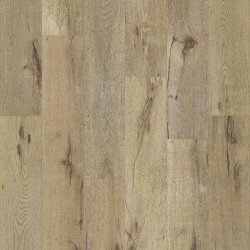
Wooden floors have long been favoured by homeowners due to their durability and stylish appearance. However, it's important to recognize that even this resilient material requires proper care to ensure its longevity. As the most heavily used part of the house, floors endure significant wear and tear over time. To preserve their quality for years to come, regular maintenance is essential.
At our company, we go beyond simply selling flooring products; we also provide guidance on how to effectively maintain them. Our goal is to assist homeowners in maximising the value of their investment. One of the first steps is to minimise unnecessary stress on the floors. This involves keeping them free from dirt and debris that could potentially scratch the surface and compromise the finish.
By taking proactive measures to care for your wooden floors, you can ensure that they remain in excellent condition for decades. Our team is here to support you in achieving that goal.
Minimising Moisture and Liquid Damage
Liquids other than water can pose risks to floors, as once they dry, removing the resulting stains often requires the use of chemical cleaners. Unfortunately, these chemicals can compromise the integrity of the floors, as they possess abrasive properties that can even melt solid objects. Consistently relying on such chemicals for floor cleaning can lead to discoloration or warping over time.
Wise Footwear Choices
High heels, particularly stilettos, present potential hazards to floors. While some individuals may find satisfaction in the distinctive clicking noises their heels make on hard surfaces, this satisfaction can quickly turn into frustration upon discovering unsightly scuff marks left behind.
Strategic Placement of Mats and Hall Runners
To protect areas prone to high foot traffic or fluid build-up, it is advisable to strategically position floor mats. These areas include doorways, spaces beneath kitchen sinks, and locations near dishwashers, among others. Since damage is inevitable in these areas, the best approach is to shield them from direct contact with potential hazards, thus prolonging their longevity.
Utilising Felt Padding
To prevent scuff marks caused by moving furniture, attaching felt pads to the bottom of furniture legs is highly recommended. Weight and friction pose significant threats to floors, but the addition of felt pads can transform the scratching drag into a smoother, glide-like motion.
By implementing these preventive measures, homeowners can help protect their floors and maintain their pristine condition for years to come.
For a more comprehensive guide on cleaning and maintaining your flooring, we offer a full article! Should you require further advice on protecting your floors, please don't hesitate to contact us. With our extensive knowledge of different flooring types, we can provide you with valuable tips and tricks to maximise their lifespan.
Q&A
How to Maintain Wooden Floors?
Minimising stress on floorboards is crucial for homeowners seeking to maintain their wooden floors. This involves promptly cleaning up messes to avoid excessive dirt and water exposure. It's also essential to exercise caution when using cleaning solutions, as some may contain chemicals that can harm the floorboards in the long term. Placing floor mats strategically in areas prone to high moisture or dirt exposure, such as the kitchen or entrance, can provide added protection.
The Best Way to Protect Hardwood Floors
The best way to protect hardwood floors is to promptly clean up spills and messes. This is especially important for those with hardwood or tile floors, as these surfaces are more sensitive compared to other types of flooring. Additionally, it's essential to be cautious when using strong chemical cleaners, as they may contain compounds that can damage the floorboards over time.
The Best Method to Clean Wood Floors
To find the most suitable cleaning solution for your wood floors, it's important to consult your floor provider, as different types of wood may require specific care. If you have concerns about harmful chemicals, look for Greenguard Gold certified solutions, which are safe to use in homes with pets and children. Alternatively, for a natural floor cleaner, you can mix half a cup of white vinegar with a gallon of lukewarm water. This option is highly effective, safe, and cost-saving.
The Best Oil for Wooden Floors
One of the commonly used oils for wooden floors is Bona Hard Wax Oil or water-based coats. These options are ideal for addressing wear and tear in unfinished flooring, especially in homes with high traffic, such as households with kids and pets.
Using Olive Oil on Wood Floors
Olive oil can be used as a touch-up for timber floors because it is naturally hypoallergenic and safe to use in your home, unlike some store-bought products. However, it cannot substitute oil-based polyurethane or water-based timber floor coatings as a complete polish since natural plant oils do not provide protection against UV-light and scratches.











